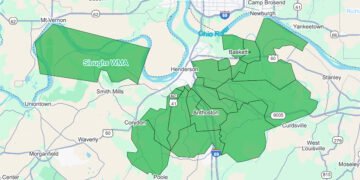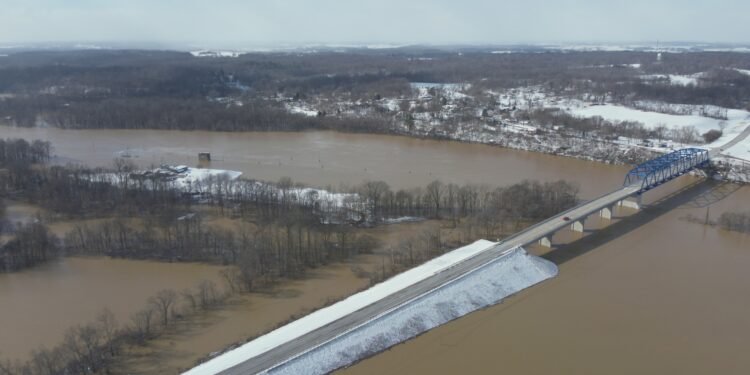Henderson County Judge-Executive Brad Schneider’s state of emergency declaration Monday is a first step in recouping costs associated with road repairs that could be need because of flooding.
County officials say the declaration wasn’t made as a warning that flooding is getting worse.
“This State of Emergency is not being issued because worsening conditions are expected but rather as part of the procedural process to try and recoup some of the costs that may be involved in repairing damage to county roads affected by flood conditions,” said Deputy Judge-Executive Kurt Wiesen in an email.
After making an emergency declaration, local officials must survey the damage from the flooding, Wiesen said. If that is determined to meet the amount of the minimum threshold set by the federal government, then the process can continue, Wiesen said.
The deputy judge said the minimum threshold is set at about $4 per person in the municipality, which would put it at about $200,000.
Right now a “guesstimation” of the damage is about $300,000, Wiesen said. But that’s not firm because as of Monday waters were beginning to recede, and county road crews haven’t been able to investigate fully.
“We don’t know what kind of road damage we’ll have once the water starts to recede,” he said.
After the county submits a more detailed report, it might be months before there’s any movement in receiving funding from the federal government, Wiesen said.
According to the road department, past flooding events occurred in the county in 2018, 2019, 2020 and 2022. High waters this year have occurred on the roads that typically get flooded. Those include:
- Mt. Vernon-Uniontown Road
- Horseshoe Road
- Gray-Aldridge Road
- Old Henderson-Evansville Road
- Wimstead
- West Franklin
- Mound Ridge
- Bluff City
- Hossman Newburgh
- Ohio River Road 1 and 2
- Green River Road 1 and 2


























